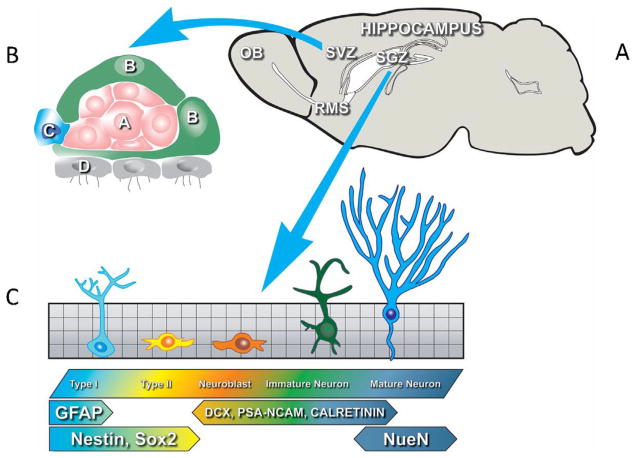FIG. 1.
A: Adult neurogenesis occurs in two regions: the subgranular zone (SGZ) and the subventricular zone (SVZ). B: In the SVZ, neural progenitor cells (type B cells) give rise to type C cells, which differentiate to neuroblasts (type A cells). Type A cells migrate via the rostral migratory stream (RMS) and differentiate into neurons in the olfactory bulb (OB). Neuroblasts migrate via the RMS to the olfactory bulb and generate new neurons. C: In the SGZ, glial-like radial stem cells known as Type-I cells express glial fibrillary acidic protein (GFAP) and nestin. They divide to produce intermediate stage progenitors (Type-II cells), which then undergo further rounds of cell division to generate neuroblasts and post-mitotic immature granule neurons. Type II cells express Sox2, while neuroblast and immature neurons express doublecortin (DCX), PSA-NCAM, and calretinin. Mature neurons are defined by expression of NeuN. [Color figure can be seen in the online version of this article, available at http://wileyonlinelibrary.com/journal/ajmgb].

